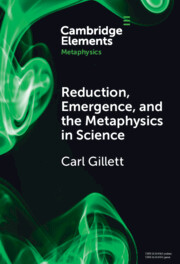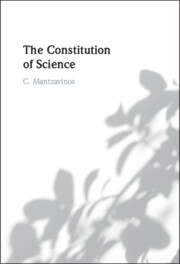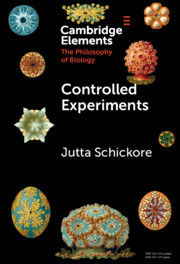Refine search
Actions for selected content:
43 results
Remembering Lysenko: when ideology and science meet
-
- Journal:
- The British Journal of Psychiatry , FirstView
- Published online by Cambridge University Press:
- 25 September 2025, pp. 1-3
-
- Article
-
- You have access
- HTML
- Export citation

Reduction, Emergence and the Metaphysics in Science
-
- Published online:
- 18 February 2025
- Print publication:
- 20 March 2025
-
- Element
- Export citation
4 - The Informal Institutions of Science
-
- Book:
- The Constitution of Science
- Published online:
- 05 December 2024
- Print publication:
- 12 December 2024, pp 22-58
-
- Chapter
- Export citation

The Constitution of Science
-
- Published online:
- 05 December 2024
- Print publication:
- 12 December 2024

Controlled Experiments
-
- Published online:
- 04 December 2024
- Print publication:
- 09 January 2025
-
- Element
- Export citation
1 - The Dialectical Agroecologist
-
- Book:
- The Dialectical Agroecologist
- Published online:
- 31 October 2024
- Print publication:
- 14 November 2024, pp 1-24
-
- Chapter
-
- You have access
- HTML
- Export citation
3 - Western and Traditional Knowledge
-
- Book:
- The Dialectical Agroecologist
- Published online:
- 31 October 2024
- Print publication:
- 14 November 2024, pp 49-72
-
- Chapter
- Export citation
10 - The Allocation of Scarce Resources
- from Part II - Economics
-
- Book:
- Five Times Faster
- Published online:
- 24 October 2024
- Print publication:
- 07 November 2024, pp 109-123
-
- Chapter
- Export citation
2 - Methods and Populations
-
- Book:
- Fundamentals of Developmental Cognitive Neuroscience
- Published online:
- 11 January 2024
- Print publication:
- 01 February 2024, pp 11-53
-
- Chapter
- Export citation
Chapter 1 - Introduction
-
- Book:
- Do the Humanities Create Knowledge?
- Published online:
- 10 November 2023
- Print publication:
- 07 December 2023, pp 1-16
-
- Chapter
- Export citation
Chapter 8 - Remedies or Superstitions
- from Part II - The Borders of Pharmacology
-
-
- Book:
- Drugs in the Medieval Mediterranean
- Published online:
- 19 October 2023
- Print publication:
- 02 November 2023, pp 277-290
-
- Chapter
- Export citation
4 - On ‘Organised Forgetting’ in the Governing Science
- from Part I - The Materialist Utopias
-
- Book:
- Late Soviet Britain
- Published online:
- 14 September 2023
- Print publication:
- 28 September 2023, pp 105-124
-
- Chapter
- Export citation
Rethinking the utility of the Five Domains model
- Part of
-
- Journal:
- Animal Welfare / Volume 32 / 2023
- Published online by Cambridge University Press:
- 27 September 2023, e62
-
- Article
-
- You have access
- Open access
- HTML
- Export citation
4 - Development of the Scientific Method: From Papyrus to Petaflops
-
- Book:
- The Philosophy and Practice of Science
- Published online:
- 17 September 2023
- Print publication:
- 31 August 2023, pp 60-137
-
- Chapter
- Export citation
1 - Introduction
-
- Book:
- The Philosophy and Practice of Science
- Published online:
- 17 September 2023
- Print publication:
- 31 August 2023, pp 1-7
-
- Chapter
- Export citation
Introduction
-
-
- Book:
- Understanding War and Peace
- Published online:
- 06 July 2023
- Print publication:
- 20 July 2023, pp 1-10
-
- Chapter
- Export citation
10 - The Allocation of Scarce Resources
- from Part II - Economics
-
- Book:
- Five Times Faster
- Published online:
- 19 March 2023
- Print publication:
- 06 April 2023, pp 91-102
-
- Chapter
- Export citation
Chapter 2 - The Story of DNA
- from Part 1 - Genetic Engineering in Context
-
- Book:
- An Introduction to Genetic Engineering
- Published online:
- 10 February 2023
- Print publication:
- 02 March 2023, pp 16-35
-
- Chapter
- Export citation
Chapter 15 - A Philosophy of Statistics
-
- Book:
- A Clinician's Guide to Statistics in Mental Health
- Published online:
- 20 January 2023
- Print publication:
- 09 February 2023, pp 107-112
-
- Chapter
- Export citation
Chapter 1: - Introduction
-
- Book:
- The Evolution of Everything
- Published online:
- 03 November 2022
- Print publication:
- 24 November 2022, pp 1-16
-
- Chapter
-
- You have access
- HTML
- Export citation
